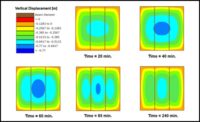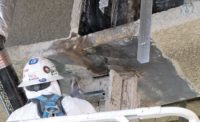Guidelines for the performance-based design of structures to resist disproportionate collapse are under development by the American Society of Civil Engineers' Structural Engineering Institute. SEI expects to release a draft next year and publish the guidelines in 2013.
“We are providing guidelines for those who wish to use them. We are not mandating use,” says Robert Smilowitz, chairman of the SEI's disproportionate collapse standards and guidance committee and a principal at structural engineer Weidlinger Associates Inc., New York City.
“Our immediate objective is to provide a solid technical basis for designing structures that are more resistant to disproportionate collapse. It is not for us to prescribe the specific structures that should follow this design guidance,” he adds.
An early draft of the document defines terms. For example, “Disproportionate collapse is characterized by a pronounced disproportion between a relatively minor event and the ensuing collapse of a major part” or all of the structure, says the draft of the Recommendations for Design Against Disproportionate Collapse of Structures. “A collapse is disproportionate if the hazard scenarios lead to an extent of damage that violates the performance objectives.”
The committee also is tackling terminology confusion caused by the synonymous use of “disproportionate” and “progressive.” The lack of clarity stems from the fact that a disproportionate collapse often occurs in a progressive manner, while a progressive collapse can be disproportionate, says the draft.
The committee favors “disproportionate collapse” in the context of design and performance because “a precise definition of ‘disproportionate' requires specified design objectives.” “Progressive collapse” is suitable when referring to the physical phenomenon and collapse mechanism.
The recommendations will discuss design methods, including event control, protection, local resistance and alternate- path methods. Direct design, indirect design and a combination of design methods also are included. Design verification, through detailed or simplified analysis, and documentation for design checks, construction, structure management and emergency response are also part of the document's scope.





Post a comment to this article
Report Abusive Comment